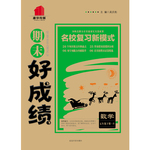题目内容
Albert Einstein (1879~1955) was one of the greatest and most original scientific thinkers of all time.
Born of Jewish parents at Ulm in Germany, he completed his education in Switzerland and got his Ph. D at the University of Zurich. He went to live in the United States in 1933 because of the rise of Nazism(纳粹)in Germany and Hitler’s persecution(迫害)of the Jews.
In 1905, while still at Zurich, he published his Special Theory of Relativity, which was based on things everyone may have noticed. If two trains are standing alongside each other and one train starts to move, a person sitting in the train may wonder whether his own train is moving or the other is moving, and before he finds out what is happening, he can see that one train is moving relatively to the other. From this and also from other more complicated facts, Einstein came to the conclusion that all motion is relative and that there are really no such things as absolute(绝对)motion. Some of the other conclusions he drew are that nothing can go faster than light, and that if something such as a ruler was moving faster and faster it would seem to get shorter and shorter as its speed was near the speed of light. By 1915, Einstein had made known his General Theory of Relativity. He also improved on Newton’s theory of gravity. Most of his theories have been tested and found to be true though some may sound strange. For his important work he was awarded the 1921 Nobel Prize for Physics.
(1) In 1933, Einstein wanted to live in the United States because ________.
A.he loved the USA.more than his own country
B.he had got some friends there with whom he could work together
C.he wanted to live quietly in the USA
D.he could no longer work in Germany when Hitler came into power
(2) Einstein published his Special Theory of Relativity when he was ________.
A.in the United States
B.in Ulm, Germany after he got his Ph.D
C.still in Switzerland at the age of twenty-six
D.still at the University of Zurich at the age of thirty-six
(3) One of the conclusions drawn by Einstein is that ________.
A.places go faster than trains and buses
B.people couldn’t run as fast as vehicles
C.light gobs the fastest of all the things
D.two trains can go in different directions
(4) Einstein added that if something such as a ruler was moving it would seem to get shorter and shorter ________.
A.because the ruler itself was short
B.when it was moving faster and faster
C.because we can’t see it clearly
D.because the ruler was broken into pieces
(5) Einstein was world-famous for his ________.
A.Special Theory of Relativity
B.General Theory of Relativity
C.improving on Newton’s theory of gravity
D.all of the above
解析:

 冲刺100分1号卷系列答案
冲刺100分1号卷系列答案 期末好成绩系列答案
期末好成绩系列答案
| |||||||||||||||||||||||||||||||||||||||||||||||||||||||||||||||||||||||||
| |||||||||||||||||||||||||||||||||||||||||||||||||||||||||||||||||||||||||||||||||||||||||||||||||||||||||||||||||||||||||||||||||||||||||||||||||||||||||||||||||||||||||||||||||||||||||||||||||||||||||||||||||||||||||||||||||||||||||||||||||||||||||||||||||||||||||||||||||||||||||||
| |||||||||||||||||||||||||||||||||||||||||||||
| |||||||||||||||||||||||||||||||||||||||||||||
